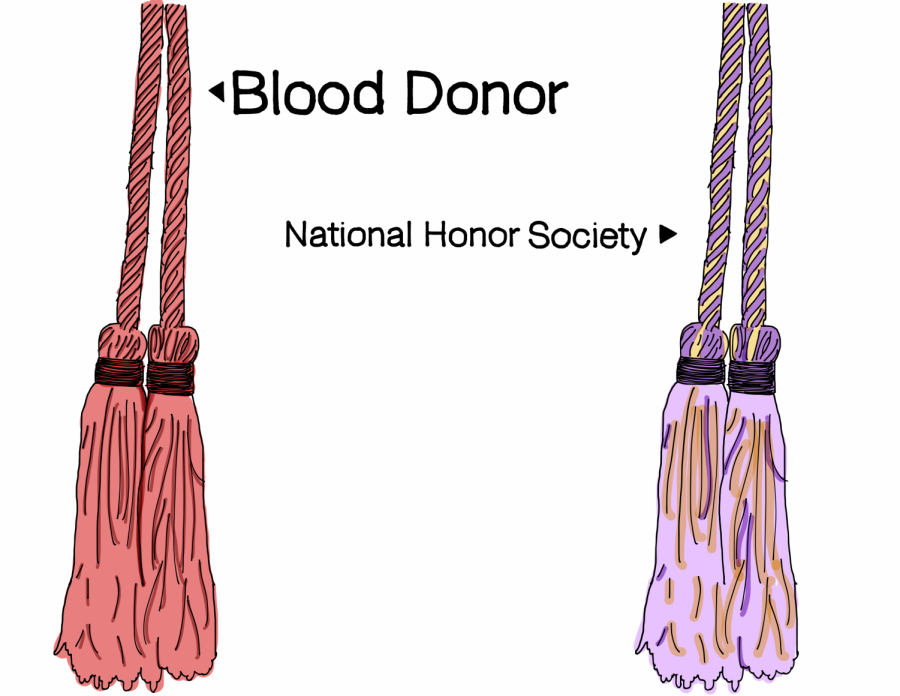Rewarded with Cords at Graduation
At graduation, a number of cords are worn to commemorate a student’s achievements in varying activities during high school.
March 31, 2019
For a high school student, graduation is perhaps the single most impactful day in their academic life. Commencement, the graduation ceremony, recognizes and validates the accomplishments that each student has earned over the course of four years. While commencement affirms those achievements verbally, graduates also receive tangible validations of all that they have accomplished in the form of cords that are worn and displayed on top of a student’s robes during the ceremony.
Johnston offers cords for six groups of students to earn at graduation: the top 3%, the top 15%, National Honor Society members, blood donors, Student Council members, and volunteers. In general, students must be members of good standing in each of the above groups to earn the distinction; each group also has certain requirements that must be met prior to receiving the cord.
For the academic cords, students must have a high enough GPA to be ranked in the the top 3% and 15% of their class. Although the school board removed student access to class rank information, the cord process is not affected. Administration can still run the top 3% and 15% and distribute cords accordingly.
The silver cord is earned through volunteering. Students who complete 50 hours of community service during their sophomore, junior, and senior years of high school (for a total of 150 hours) receive the cord to wear at graduation from sponsor Chris Beguhn. Each cord is $2.50 due to the volume purchased. “I wrote a grant when the program started, and that paid for 1000 cords,” Beguhn said. Approximately 100 students earn the cord each year.
Other cords are earned by being members of certain groups, like Student Council, sponsored by Kari Gray, and National Honor Society (NHS). To earn the NHS cord, students must complete the requirements: attend meetings, complete 25 hours of community service and do two projects.
Members of Student Council earn a cord for each year they have been on Student Council and must be in good standing. “They must be on a committee during all trimesters each year,” Gray said. “If students are only on for one year, they only receive one cord.” Students are informed prior to graduation, via email, of the cords and pick them up. Members then return the cords when they receive their diplomas. Students do have the option to retain them though; in that case, students must pay to keep the cord.
The cord for donating blood is the most rare, as only 10-15 students earn the cord each year. According to the LifeServe Blood center, students who demonstrate a commitment to saving lives by registering to donate blood five times before graduation are considered “donors of distinction”. Along with the cord, donors receive a Certificate of Achievement, a letter of accomplishment from the LifeServe Blood Center President, and recognition in a press release sent to the local newspaper. The cords are handed out by Gray and teacher Thomas Griffin to recipients on Senior Night. Unlike Silver Cord, the money to buy the cords must be voted on once the total bill is calculated and comes from the school budget.
Each cord is distinct and is earned through varying processes, representing the time utilized and dedication needed for students to collect the cord. Graduation is certainly memorable and a culmination of four years of schooling, and the cords serve as a reminder of that monumental achievement.






